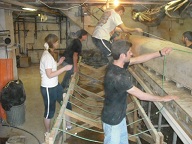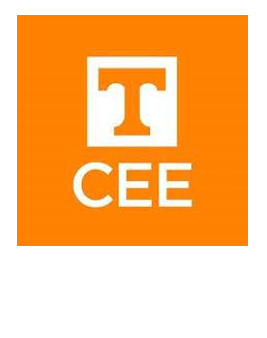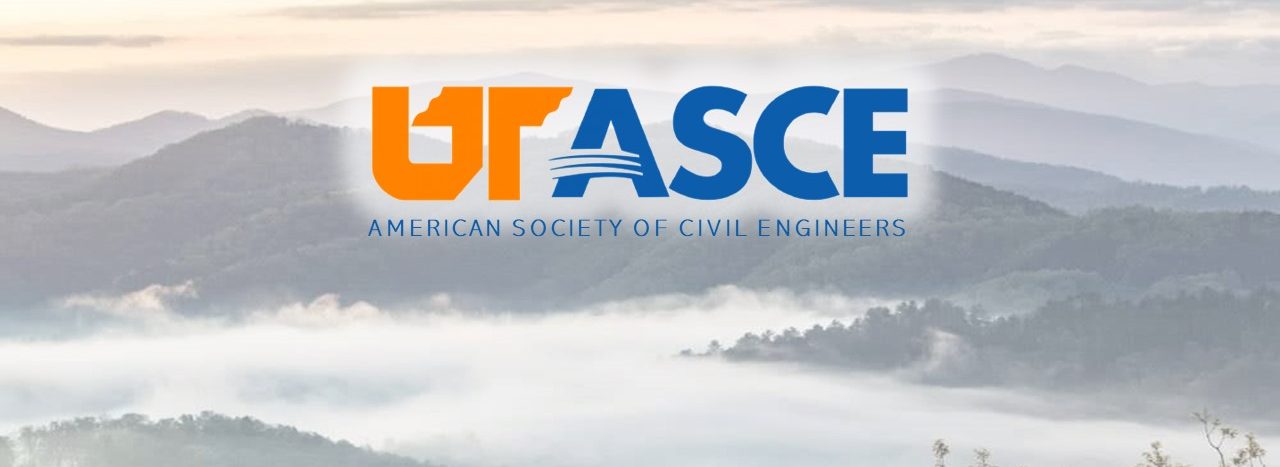The 2017-2018 Concrete Canoe, called the Ole Smokey, came in 13th place. The canoe featured a symmetrical design that was more stable in the water than previous iterations. 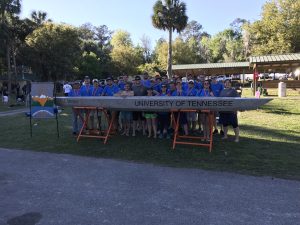
Pictured Below is the Concrete Canoe made for the 2017 Southeastern Regional ASCE Conference.
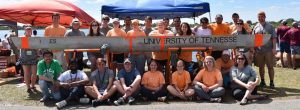
The 2014-2015 Concrete Canoe, brought home 5th place for UT for the first time in over 20 years! This beautiful canoe, inspired by the Latin phrase "to volunteer between nations" features flags of the nations most represented at UT and student's origins mapped out on a globe on the interior. The canoe was designed to optimize speed and maneuverability through incorporation of a distinguishable bow and stern. This year marked a transition into a wooden mold which proved to be cheaper, less time-consuming, and allowed for a smoother finish. The concrete mixture continues to increase in strength, durability, work-ability, while maintaining the desired weight for an ideal water line. Sustainability was also a major focus for this canoe and was incorporated throughout material selection, recycled pieces, mold construction, and transportation.
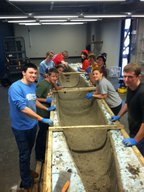
The 2013 Concrete Canoe team was proud to switch to a female mold for the past year. The team was also proud to produce a beautiful tributary canoe to the 175th Anniversary of Engineering at the University of Tennessee, with superior turning ability over the past year’s.
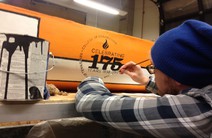
The 2012 concrete canoe team returned to the basics with their canoe, Concrete Canoe classic. After the races at the 2012 Southeast Regional Conference, the team decided to see how many people could fit in the canoe and it still float. The result of this experiment can be seen to the right with 9 members of the concrete canoe team in the canoe, with plenty of clearance to float. The 2012 Concrete Canoe team produced a boat with deadly speeds on the straight stretches. This boat was designed to sit very low in the water to contribute to this speed.
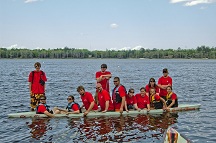
The 2011 Concrete Canoe team was proud to continue the use of a male mold for the annual conference. Male molds are more difficult to use and require the use of a specialized table to remove the mold. The team was also proud to implement a water recycling humidifying tent. This tent keeps the concrete hydrated during the curing process and a catch basin allows runoff water to be reintroduced to the system instead of being
